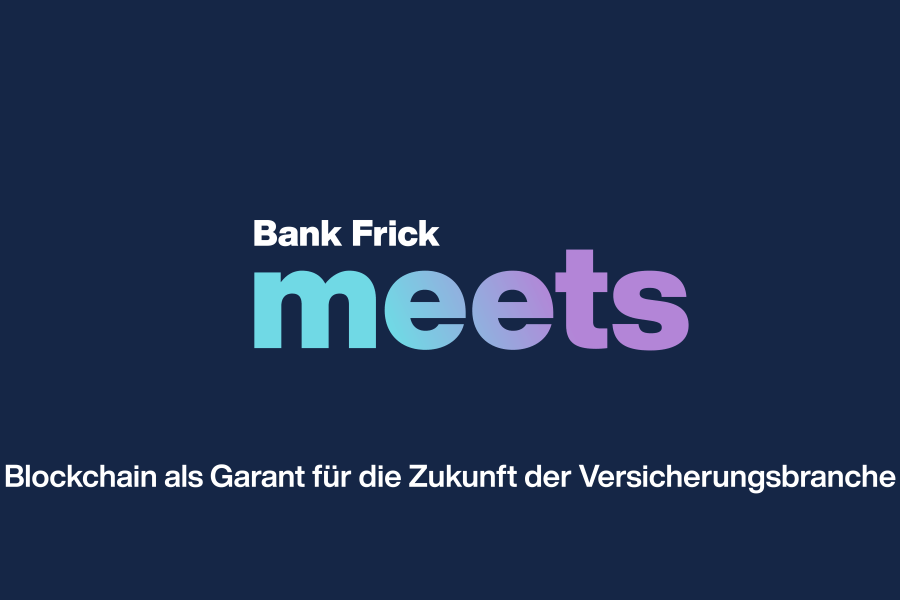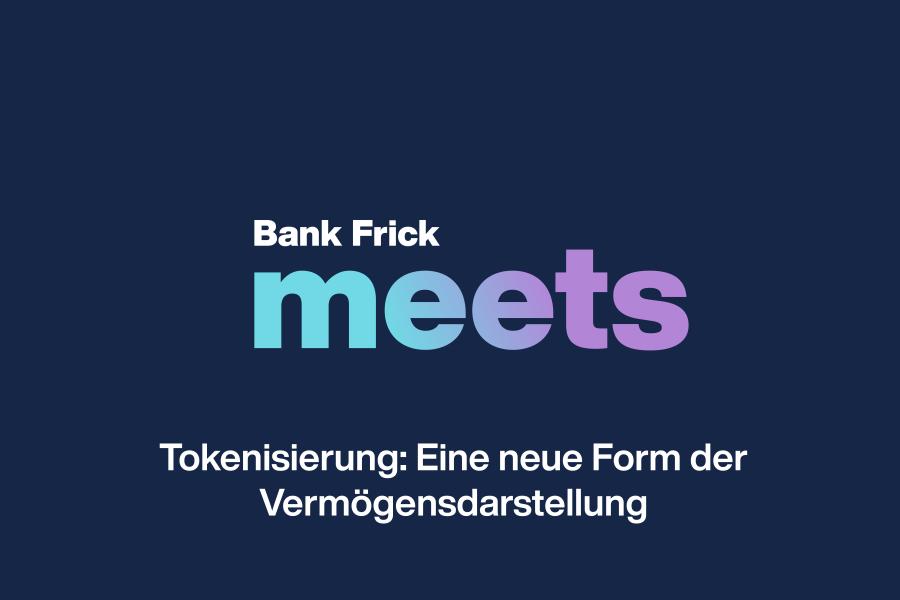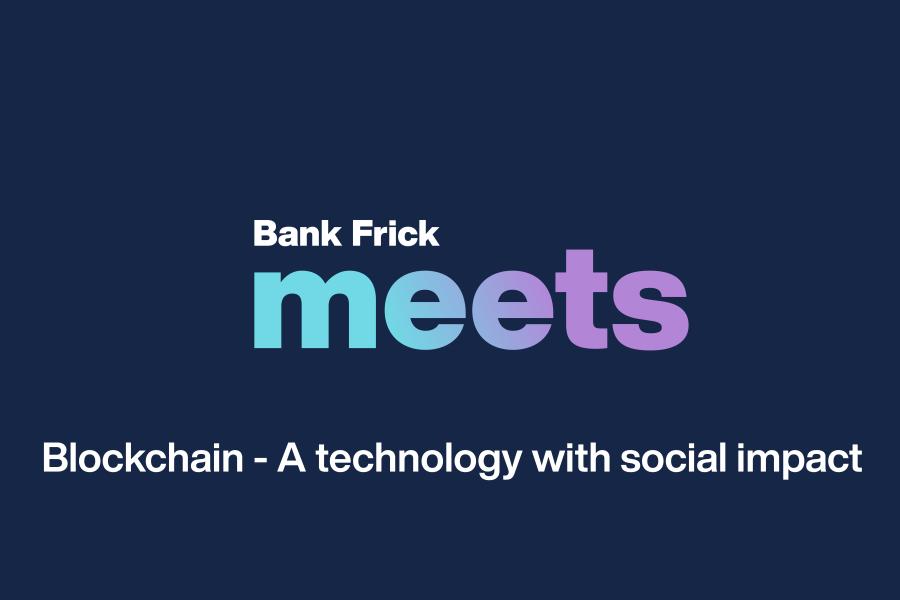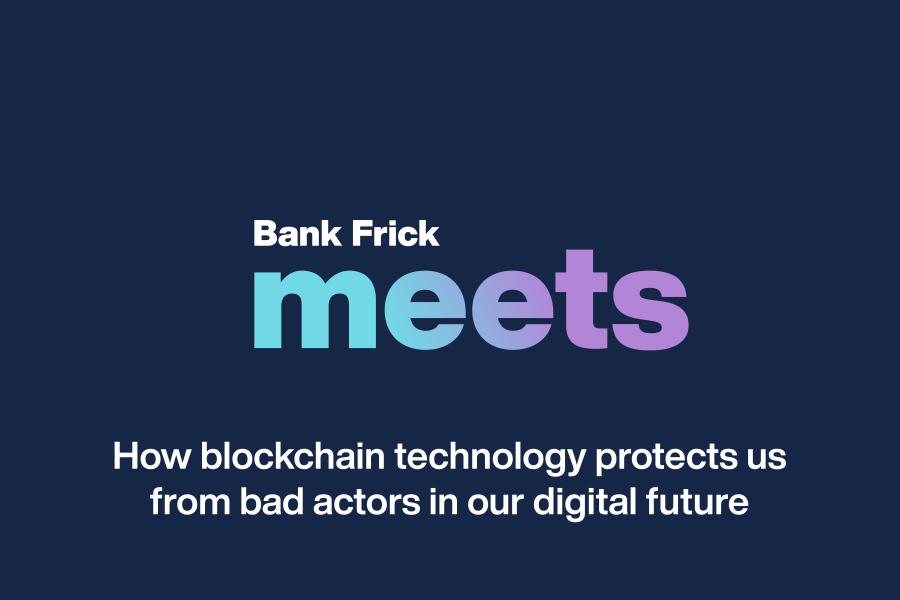Assessing the European Commission’s Regulation of Markets in Crypto-assets
The newly published draft of the European Commission’s Regulation of Markets in Crypto-assets (MiCA) could be a necessary step towards harmonizing the treatment of crypto-assets throughout the European Union and thus could be a key driver in terms of industry professionalization and adaption of crypto-based financial products. Yet, the draft still contains some ambiguities that should be removed to ensure clarity and legal certainty for all stakeholders.
Based on broad public consultations and the Digital finance outreach, the European Commission adopted a digital finance package on 24 September 2020, including a digital finance strategy and legislative proposals on crypto-assets and digital resilience with the aim of a competitive EU financial sector that gives consumers access to innovative financial products, while ensuring consumer protection and financial stability.
At first glance, the package can be deemed a huge and mostly smart step towards integrating distributed ledger technology into the existing EU legal framework. However, the devil is in the detail. Below, we’ve identified some provisions with no claim of completeness regarding MiCA, which need further clarification to allow for a uniform applicability throughout the Capital Markets Union thus fulfilling the ultimate aim of the digital financing package.
Our critical remarks mainly aim at industry experts and professionals as well as relevant stakeholders involved in the legislative process of MiCA.
Definition and scope of “advice on crypto-assets” in Article 3(1), point 9(h) as well as Article 3(1), point 17
“Providing advice on crypto-assets’ means offering, giving or agreeing to give personalised or specific recommendations to a third party, either at the third party’s request or on the initiative of the crypto-asset service provider providing the advice, concerning the acquisition or the sale of one or more crypto-assets, or the use of crypto-asset services.”
Questions arising:
- The question arises what the exact scope of “advising on the use of crypto-asset services” should be
- In general, the regulation of “advice” seems to be mainly rooted in considerations to ensure consumer protection (see also recital 63), however given the vague definition of “use of crypto-asset services” consulting services to e.g. prospective crypto-asset service providers could likely be deemed as a crypto-asset service itself
- Additionally, Article 73 does not seem to explain “use of crypto-asset services” in more detail which supports the question of scope
- DIRECTIVE 2014/65/EU (hereinafter referred to as “MIFID II”) does not regulate “advising on the use of investment services” hence why should the mere advice on the use of crypto-asset services be regulated?
Possible solutions:
- As a possible solution one could consider to delete the provision “or the use of crypto-asset services”
- Alternatively, one could consider to specify the scope in more detail e.g. in Article 73 in such way that “advising on the use of crypto-asset services” primarily is applicable in the case of advice to retail clients on a professional basis (meaning against compensation)
Definition of “asset-referenced token” in Article 3(1), point 3
“‘Asset-referenced token’ means a type of crypto-asset that purports to maintain a stable value by referring to the value of several fiat currencies that are legal tender, one or several commodities or one or several crypto-assets, or a combination of such assets;”
Questions arising:
- The question arises how to measure “purports to maintain a stable value”?
- When trying to differentiate “asset-referenced token” from e.g. a “collective investment scheme token” or “derivative token” which both would not fall under applicability of MiCA, the criterion “purports to maintain a stable value” likely will be the main deterministic provision. Personally, we are concerned that we will likely need detailed judicial precedence and/or some kind of formal test criteria to achieve a clear answer whether the criterion “purports to maintain a stable value” is prevalent enough to qualify the respective token as being an “asset-referenced token” under MiCA
- Additionally, the “purpose of maintaining a stable value” could turn out to be non-static and might change during the token lifecycle. How to deal with such a changing purpose from a regulatory perspective?
- Finally, the question arises on how to interpret “stable value”? Stable value will always need to be measures in certain accounting units, by varying the accounting unit the concept of stability changes as well. E.g. 1 gram of gold measured in EUR as accounting unit might not seem to be stable, however when measuring 1 gram gold measured in silver might likely turn out to look quite stable.
Possible solutions:
- Clarification that the “stable value” concept refers to a stable value in fiat money terms.
- Clarification on how to measure or test the “stable value” concept.
- Clarification on how to deal with a changing nature of a token during the lifetime.
Definition and scope of “issuer of crypto assets” in Article 3(1), point 6
“‘issuer of crypto-assets’ means a legal person who offers to the public any type of crypto-assets or seeks the admission of such crypto-assets to a trading platform for crypto-assets;”
Questions arising:
- Are natural persons excluded from the definition of an issuer? Consequently, are private individuals prohibited to issue crypto-assets or are they merely not subject to MiCA?
- Contrary to the case of issuing financial instruments whereby only the issuing entity is being defined as an “issuer” it seems that MiCA is aiming at the elements of “offering to the public” and “seeking admission to a trading platform” as the central elements of the definition. However, “issuing”, “offering” and “seeking admission to trading” are different activities which should not be combined for regulatory purposes.
Possible solutions:
- Modified wording: ‘issuer of crypto-assets’ means a legal person who issues any type of crypto-assets or seeks the admission of such crypto-assets to a trading platform for crypto-assets.
Definition and scope of “placing of crypto-assets” in Article 3(1), point 15
“‘placing of crypto-assets’ means the marketing of newly-issued crypto-assets or of crypto-assets that are already issued but that are not admitted to trading on a trading platform for crypto-assets, to specified purchasers and which does not involve an offer to the public or an offer to existing holders of the issuer’s crypto-assets;”
Questions arising:
- Does the element of “marketing” alone already trigger the service of “placing crypto-assets”?
- Differentiation of issuer or issuance (to the public) and placement (excluding an offer to the public) as per MiCA seems to significantly diverge from the corresponding definitions in MIFID II as well as the REGULATION (EU) 2017/1129 (hereinafter referred to as the “prospectus regulation”) and thus are not 100% clear to an ordinary market participant. In the classical securities world (i.e. MIFID II) “placement” is defined as the service of a) a sale of financial instruments, b) in the name of a third-party, c) for the account of that third-party, d) in the context of an issuance, e) under a placement agreement and f) without a firm takeover obligation, whereas “issuer” is defined as being “a legal entity which issues or proposes to issue securities”.
- placement” with “offering”: ‘offering of crypto-assets’ means the marketing of newly-issued crypto-assets or of crypto-assets that are already issued by a person or entity other than the issuer against any form of compensation or benefit be it direct or indirect”
Applicability of MiCA vs. applicability of other financial market regulations / directives as per Article 2, point (2)
However, this Regulation does not apply to crypto-assets that qualify as: (a) financial instruments as defined in Article 4(1), point (15), of Directive 2014/65/EU; (b) electronic money as defined in Article 2, point (2), of Directive 2009/110/EC, except where they qualify as electronic money tokens under this Regulation; (c) deposits as defined in Article 2(1), point (3), of Directive 2014/49/EU of the European Parliament and of the Council49; (d) structured deposits as defined in Article 4(1), point (43), of Directive 2014/65/EU; (e) securitisation as defined in Article 2, point (1), of Regulation (EU) 2017/2402 of the European Parliament and of the Council .
or as per Art. 7, point (3)
“The notification of the crypto-asset white paper shall explain why the crypto-asset described in the crypto-asset white paper is not to be considered: (a) a financial instrument as defined in Article 4(1), point (15), of Directive 2014/65/EU; (b) electronic money as defined in in Article 2, point 2, of Directive 2009/110/EC; (c) a deposit as defined in Article 2(1), point (3), of Directive 2014/49/EU; (d) a structured deposit as defined in Article 4(1), point (43), of Directive 2014/65/EU.”
or as per Art. 16(2), point (d)
“a legal opinion that the asset-referenced tokens do not qualify as financial instruments, electronic money, deposits or structured deposits;”
Questions arising:
- A legal opinion as the foundation for qualifying whether applicability of laws / regulations applies should be avoided by all means. The purpose and applicability of law should be kept as clear as possible already as per rule of law.
- Hence, Iwe recommend a “testing cascade” along the lines of the following questions:
- Is the crypto-asset at hand a structured deposit?
- Is the crypto-asset at hand a deposit?
- Is the crypto-asset at hand electronic money?
- Is the crypto-asset at hand a financial instrument?
- Should the answers be NO in all questions above, it will be a “crypto-asset” subject to MiCA!
- The definitions of “deposit”, “structured deposit” or “electronic money” in EU legislation seem to be straightforward. However, the different forms of financial instruments are defined in various sources of law, hence a consistent and coherent overview – for non-equity financial instruments – only seems to be available in the COMMISSION DELEGATED REGULATION (EU) 2017/583 (hereinafter referred to as “RTS 2”).
- It further seems that definitions of the various non-equity financial instruments and their distinction especially from collective investment schemes are not harmonised across EU Member States. This lack of common understanding will contribute to increased difficulties when trying to assess whether one is dealing with a financial instrument or a crypto-asset under MiCA.
Possible solutions:
- Clear definition of the various forms of financial instruments in one juridical act taking into account the provisions of RTS 2. To achieve true harmonisation the preferred way would be the form of a directive.
- Clarification that MiCA applies only, if the Crypto-asset cannot be qualified as one of the exempted forms in Article 2 point (2).
Requirement of crypto-asset issuers to be a legal entity in Article 4(1):
“No issuer of crypto-assets, other than asset-referenced tokens or e-money tokens, shall, in the Union, offer such crypto-assets to the public, or seek an admission of such crypto-assets to trading on a trading platform for crypto-assets, unless that issuer: (a) is a legal entity;”
Questions arising:
- If there is no issuer (e.g. Bitcoin) in the form of a legal entity, issuance of a crypto-asset seems to be prohibited under MiCA. However, the rules governing “placing” as per point 4 above are still applicable. In such a case the questions arise how “issuing” can be prohibited and at the same time a “placement” seems feasible?
- Referring back to point 3 above, regulating the elements “issuing” and “offering” as part of the issuer definition likely does not yield an efficient regulation.
Possible solutions:
- Modified wording: “No issuer of crypto-assets, other than asset-referenced tokens or e-money tokens, shall, in the Union, issue such crypto-assets, or seek an admission of such crypto-assets to trading on a trading platform for crypto-assets, unless that issuer: (a) is a legal entity;
“Offering” should be regulated separately and be possible in the Union, even if the issuer is domiciled outside the EWR/EU, not a legal entity, or if there is no issuer at all.
Consequences of excluding deposits from the scope of MiCA in Article 2(2):
“However, this Regulation does not apply to crypto-assets that qualify as: (a) financial instruments as defined in Article 4(1), point (15), of Directive 2014/65/EU; (b) electronic money as defined in Article 2, point (2), of Directive 2009/110/EC, except where they qualify as electronic money tokens under this Regulation; (c) deposits as defined in Article 2(1), point (3), of Directive 2014/49/EU of the European Parliament and of the Council; (d) structured deposits as defined in Article 4(1), point (43), of Directive 2014/65/EU; (e) securitisation as defined in Article 2, point (1), of Regulation (EU) 2017/2402 of the European Parliament and of the Council.”
Questions arising:
- Based on the provision above, tokenising deposits seems possible without triggering applicability of MiCA. How about vice versa? In principle, a bank could treat crypto-assets as “deposits” on a voluntary basis and consequently, such crypto-assets should no longer be subject to MiCA?
- Should certain crypto-assets be eligible for being treated as “deposit”, the question arises which regulatory capital requirements do apply? Following the principle “same risks same rules” if crypto-assets are being merely accepted by a bank there is no regulatory capital requirement given assets and liabilities in the balance sheet literally are cancelling themselves. However, if crypto-asset deposits should be used for granting loans denominated in crypto-assets the question arises if this can be covered by way of existing regulatory capital requirements or if there is a need for modification.
Possible solutions:
- Clarification whether crypto-assets can be treated as deposits
- Clarification which regulatory capital requirements do apply if a credit institution is reflecting crypto-assets “on-balance-sheet”:
- For the purpose of maintaining a trading book
- For the purpose of (long-term) investment
- For the purpose of accounting for “crypto-asset deposits”
- For the purpose of granting loans in crypto-assets
Interest prohibition in Article 36:
“Issuers of asset-referenced tokens or crypto-asset service providers shall not provide for interest or any other benefit related to the length of time during which a holder of asset-referenced tokens holds asset-referenced assets.”
Questions arising:
- Does this provision also catch any form of benefit which could be generated out of lending activities of does a lending fee not qualify as “interest” in the meaning of Article 36?
- We are not 100% sure what the exact meanings of “during which a holder of asset-referenced tokens holds asset-referenced assets” or specifically “asset-referenced assets” are. Generally, a holder of asset-referenced token will only hold such token and not the underlying assets.
Possible solutions:
- Modification of the wording: “Issuers of asset-referenced tokens or crypto-asset service providers shall not provide for interest or any other benefit related to the length of time during which a holder of asset-referenced tokens holds such tokens.”
As already stated in the beginning, MiCA is a huge and necessary step towards harmonizing the treatment of crypto-assets throughout the Union. However, given the need to differentiate crypto-assets from already existing financial markets / financial instruments as well as banking regulation, there is room for better definitions and slight amendments to further sharpen the profile of MiCA and hence achieve a better regulatory basis at the legislative level. Personally, we are excited to follow the further fine-tuning of MiCA and its incorporation into European law. We do hope, that based on this article we can contribute to a constructive process of re-assessing certain provisions of the current draft. Despite not being directly part of MiCA we think that especially a coherent list of the various financial instruments and their distinction under European law can significantly contribute to a resilient Capital Markets Union.
Share post


Auch interessant

Vom Code zur Wirkung: Mit Blockchain zu mehr Transparenz und Effizienz
Die Blockchain-Technologie, bekannt geworden durch Laszlo Hanyecz' berühmten Pizzakauf 2010, hat sich weit über digitale Währungen hinaus entwickelt. Mit ihren Eigenschaften – Dezentralisierung, Transparenz und Unveränderbarkeit – ermöglicht sie effiziente und sichere Transaktionen ohne Mittelsmänner. Besonders Smart Contracts haben die Einsatzmöglichkeiten der Blockchain erweitert, etwa in Bereichen wie Lieferketten, Automatisierung und grenzüberschreitende Zahlungen.
Kritiker äußern Bedenken hinsichtlich Energieverbrauch und Komplexität, doch moderne Blockchains sind energieeffizienter geworden und durch benutzerfreundliche Schnittstellen leichter zugänglich. Im Non-Profit-Sektor bietet Blockchain großes Potenzial: Spenden können transparent, kostengünstig und nachvollziehbar vom Spender direkt zum Empfänger übertragen werden, wodurch Effizienz und Wirkungsnachweis deutlich verbessert werden. Die Technologie markiert somit den Beginn einer neuen Ära von Vertrauen und Zusammenarbeit.

Einblicke in den Prozess der Gestaltung von AMCs
Actively Managed Certificates (AMCs) haben sich zu einem bedeutenden Bestandteil des europäischen Finanzmarktes entwickelt. Als strukturierte Produkte, rechtlich als Schuldverschreibungen klassifiziert, bergen sie für den Investor ein entsprechendes Gegenparteienrisiko, vergleichbar mit anderen strukturierten Finanzprodukten. AMCs werden in Form von Wertpapieren verbrieft, die den jeweiligen Inhaber das Recht auf Geldrückzahlung oder Lieferung eines Basiswertes geben. Durch den Erwerb wird der Investor somit zum Gläubiger des Emittenten und begibt sich in eine Abhängigkeit im Hinblick auf die Art und Höhe der Rückzahlung, die von verschiedenen Parametern abhängig ist.

Direct Market Access – Effiziente Handelsabwicklung für Fondsstrategien
Liechtenstein verfügt über eine langjährige Tradition in den Bereichen Banking und Asset-Management. Seit dem EWR-Beitritt im Jahr 1995 hat sich der liechtensteinische Finanzplatz sukzessive als fachkundige Anlaufstelle für Promotoren von kollektiven Anlagestrukturen auf dem europäischen Finanzmarkt etabliert.

Blockchain als Garant für die Zukunft der Versicherungsbranche
Der Versicherungsmarkt ist ein wesentlicher Bestandteil der Weltwirtschaft und deckt sowohl persönliche als auch geschäftliche Risiken ab. Es ist daher nicht verwunderlich, dass es sich um eine der grössten Branchen der Welt handelt, die einen geschätzten Wert von etwa 5 Billionen US-Dollar aufweist und rund 2,7 Millionen Menschen auf der ganzen Welt beschäftigt. Von den 5 Billionen US-Dollar entfallen rund 3,7 Billionen US-Dollar auf den weltweiten Lebensversicherungsmarkt, während der Wert des Schaden- und Unfallversicherungsmarktes bei 1,3 Billionen US-Dollar liegt.

Tokenisierung: Eine neue Form der Vermögensdarstellung
Seit Anbeginn der Zeit haben die Menschen gejagt und gesammelt und sich das, was sie fanden, zu eigen gemacht. Dies ist die Zeit, in der das Konzept der besitzfähigen Vermögenswerte zum ersten Mal auftaucht, wenn auch nur in rudimentärer Form. Seitdem haben sich die Vermögenswerte weiterentwickelt und sind komplexer geworden, weil die Menschen zuverlässigere Wege gefunden haben, Vermögenswerte mit Menschen zu verbinden. Heutzutage schliessen Menschen bei der Übertragung von Vermögenswerten Verträge ab.

Blockchain: A technology with social impact
Foundational technology is the most effective tool for impacting society at large and solving the challenges it is faced with. One such foundational institutional technology is the blockchain, which entered the picture through the discovery of Bitcoin in 2009 and has since proliferated and emerged in many different forms.
What does blockchain’s social impact look like?

Wie uns Blockchain-Technologie in der digitalen Zukunft vor Angriffen schützt
Die Blockchain-Industrie verzeichnet seit einigen Jahren ein signifikantes Wachstum. Krypto-Start-ups schiessen aus dem Erdboden, und eines nach dem anderen scheint sich als «Einhorn» zu erweisen. In unserer neuen Reihe werden wir diese Technologie in Blogposts und Webinaren genauer unter die Lupe nehmen und erörtern, weshalb sie so erfolgreich ist und überall im Zentrum des Interesses steht. Dabei werden wir uns weniger mit dem spekulativen Aspekt befassen, mit dem die Blockchain häufig in Verbindung gebracht wird, sondern vielmehr untersuchen, inwiefern sie reale Probleme lösen kann.

Wie klassische Finanzintermediäre in der Krypto- und Blockchain-Welt Fuss fassen können
Mit zunehmender Selbstverständlichkeit fragen immer mehr Kunden nach Dienstleistungen rund um Kryptowährungen. Für Finanzintermediäre eröffnet diese Nachfrage neue Geschäftsmöglichkeiten. Um das Potenzial heben zu können, müssen die Akteure aber auch das Spezialwissen zur Verfügung haben.

Blockchain technology reinvents correspondent banking – just not yet
As one of its major use cases, blockchain technology is said to transform traditional correspondent banking. So far major challenges have pushed back this transformation. It is more likely than ever that with central bank digital currencies on the horizon; blockchain disruption will finally come to fruition in the realm of cross-border banking.

Turning crypto investment into an earning asset
With Ethereum upgrading to Proof of Stake, the crypto world is going through one of its most transformative shifts to date. This means that customers will soon be able to earn interest on their digital asset holdings through a process called staking. What staking is, how it will define the future of Ethereum and digital asset custody at large is explained in this article.